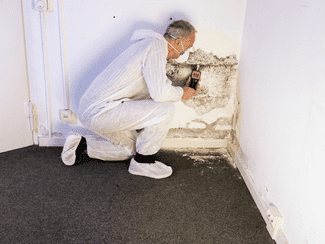Mold in Rentals: Landlord Liability, Responsibility, and Prevention
Learn about your landlord’s liability for mold problems, how to get rid of mold, and how to prevent it in the first place.
Mold is an environmental hazard that can cause concern among renters. Across the country, tenants have won multimillion-dollar cases against landlords for significant health problems—such as rashes, chronic fatigue, nausea, cognitive losses, hemorrhaging, and asthma—allegedly caused by exposure to “toxic molds” in their building.
If you suspect there is mold in your rental unit, learn what to look for and when your landlord might be liable. Even better, take steps to prevent mold before it becomes a problem—or clean mold up before it does become a problem.
Where Mold Is Found

Mold often grows on water-soaked materials, such as wall paneling, paint, fabric, ceiling tiles, newspapers, or cardboard boxes. Humidity sets up prime growing conditions for mold. Buildings in naturally humid climates of Texas, California, and the Southern U.S. have experienced more mold problems than residences in drier climates. But whatever the climate, mold can grow as long as moisture is present.
Mold and Your Health
Mold is also among the most controversial of environmental hazards. There is considerable debate within the scientific and medical communities about which molds, and what situations, pose serious health risks to people in their homes. There is no debate, however, among tenants who have suffered the consequences of living amidst (and inhaling) mold spores.
Keep in mind, however, that most mold is not harmful to your health—for example, the mold that grows on shower tiles is not dangerous. It takes an expert to know whether a particular mold is harmful or just annoying. And it’s very tricky to find out whether a person who has been exposed to mold has actually inhaled or ingested it. New tests that measure the presence of a particular mold’s DNA in a blood sample are the only way to know for sure whether the mold is present in the body.







 Accessibility
Accessibility